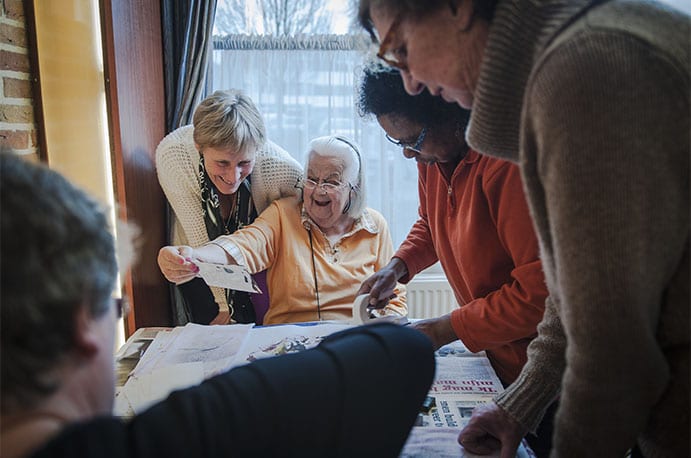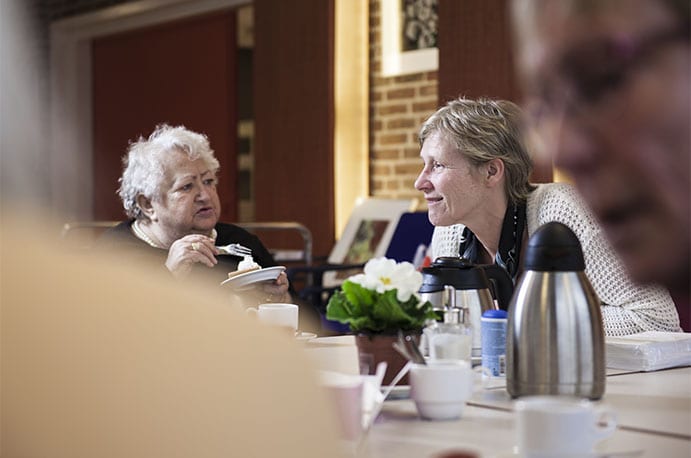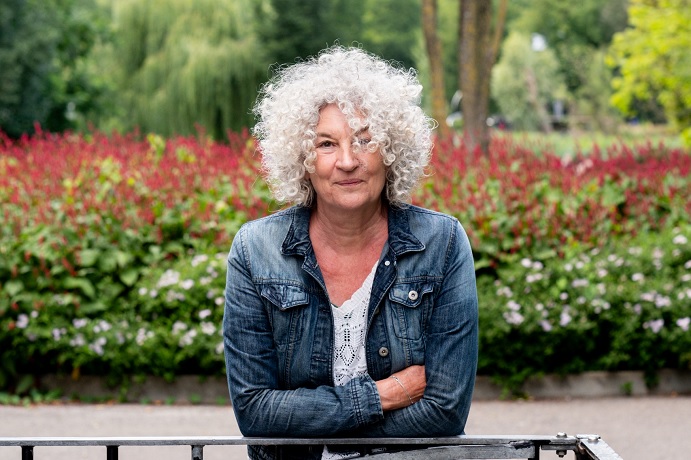Welcome is a verb

At small care locations, people with advanced dementia live who require a lot of extra attention. Caregivers, family, and volunteers ensure a good old age. There are many people who would like to volunteer at such a small, homely place. How do you ensure that these volunteers remain motivated to continue their work?
On March 13, volunteer coordinators from large care facilities in Nieuw West gathered around the table during our meeting.Inspiration meeting Craftsmanship = Mastery. Female professionals who recruit volunteers and ensure a good match in a suitable position. Sometimes volunteers drop out. Why is that? What do they do to retain volunteers? What tips can we give each other?—>It starts with the healthcare staffWhat does it mean for them to work with volunteers? What do they expect from volunteers and what can you expect? How do you ensure that a volunteer feels welcome, useful, and needed? It is important that a permanent employee is responsible for the volunteers. If that foundation is not there, volunteers quickly drop out. Healthcare is under pressure, healthcare staff do a lot in a day and sometimes are alone at a healthcare location. A few nice volunteers are really worth the time investment. If that understanding is there and the willingness, then you can start recruiting.Getting to know each otherAs a volunteer coordinator, I schedule the introductory meeting with the new volunteer at the location, I align expectations well and provide an honest picture of the residents while giving a brief tour. Then, I ensure that the volunteer is paired with a permanent staff member so that they feel welcomed, can chat afterwards, and have a point of contact after the trial period. If I believe a volunteer is not suitable for the role, I do not accept them and refer them elsewhere.Onboarding PlanI consult monthly as a coordinator on how the volunteers are doing at the locations. A concise and clearly written onboarding plan helps the healthcare workers get started.Open cultureExperienced volunteers can effectively train new volunteers. Sometimes there are volunteers who are vulnerable themselves, for example, reintegrating after illness or not proficient in Dutch. In these cases, it is nice if these volunteers are supported. It is important that volunteers who have been working for a long time are open to new volunteers. Care staff are responsible for the atmosphere and work culture. If it is open and welcoming, volunteers will be happy to keep coming.Feeling of belongingA board showing which employees and volunteers are working that day is nice for family, visitors, residents, and really makes the volunteer feel like they belong. The night shift takes care of the board.(text continues below the photo)
 —>Real attentionIn the kitchen cabinet hangs a list of activities that residents enjoy doing, a sort of ideas list. Walking, looking at photos, playing billiards, playing records. Who is someone and what has someone done in life? This ensures that volunteers do not have to come up with everything themselves and can truly pay attention to the residents.Introduction to the familyUpFamily NetworkNew volunteers are introduced so that families are not taken by surprise. If we have exciting new games or digital activities, we make sure to inform everyone. It’s wonderful when volunteers take the time to learn about them and engage with residents, or teach family members how to use them.Feeling at homeIt can sometimes be quiet in the cottages, so it’s good for volunteers to have the opportunity to perform tasks in a neighboring cottage. Feeling useful, needed, welcome, must really come from the employees in the beginning. The residents are often so ill that they don’t recognize you. Once the volunteer feels more at home, you can see that things start to happen more naturally.
—>Real attentionIn the kitchen cabinet hangs a list of activities that residents enjoy doing, a sort of ideas list. Walking, looking at photos, playing billiards, playing records. Who is someone and what has someone done in life? This ensures that volunteers do not have to come up with everything themselves and can truly pay attention to the residents.Introduction to the familyUpFamily NetworkNew volunteers are introduced so that families are not taken by surprise. If we have exciting new games or digital activities, we make sure to inform everyone. It’s wonderful when volunteers take the time to learn about them and engage with residents, or teach family members how to use them.Feeling at homeIt can sometimes be quiet in the cottages, so it’s good for volunteers to have the opportunity to perform tasks in a neighboring cottage. Feeling useful, needed, welcome, must really come from the employees in the beginning. The residents are often so ill that they don’t recognize you. Once the volunteer feels more at home, you can see that things start to happen more naturally.
Thanks to the skilled women Doetie de Roest from Amstelring, Ansje Visser from Amsta, and Judith de Meijer from Cordaan.
Nettie SterrenburgOrganization Consultant Volunteer Center Amsterdam


